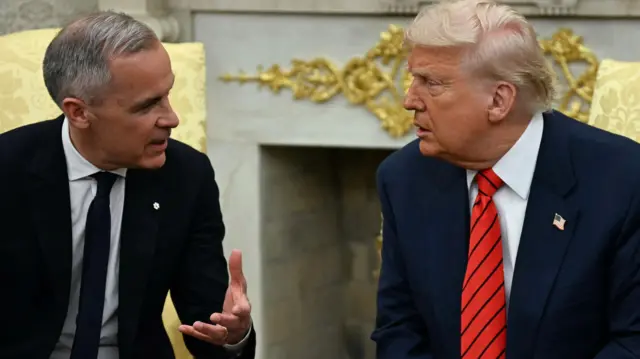President Donald Trump has declared a 35% tariff on Canadian goods, effective August 1. The announcement was made via Truth Social, Trump’s own social media platform, and has sent waves through both diplomatic and economic circles.
The sudden policy shift comes just days before a scheduled deadline to renegotiate key trade terms between the United States and Canada, prompting fears of an impending trade war.
Trump also hinted at broader tariffs ranging from 15% to 20% on other U.S. trade partners, fueling speculation that the former president is reviving his signature “America First” strategy ahead of the 2025 election season.
“We must protect American workers and stop the flow of unfair goods, especially from countries that contribute to the fentanyl crisis,” Trump wrote.
The reference to fentanyl, a synthetic opioid, was widely interpreted as a dig at Canada’s alleged lack of enforcement on cross-border trafficking — a claim Canadian officials have denied.
Canadian Prime Minister Mark Carney responded swiftly, affirming his government’s commitment to defending the country’s economic interests. Speaking at a press briefing in Ottawa, Carney said Canada would “explore appropriate reciprocal measures” if the U.S. move is finalized.
“We have always believed in fair trade, but we will not hesitate to defend our workers,” said Carney, the former Bank of England governor now leading Canada through a tense economic moment.
The announcement has thrown uncertainty over the fate of the USMCA, the trilateral trade agreement that replaced NAFTA in 2020 and governs commerce between the U.S., Canada, and Mexico.
The Canadian dollar slipped in early trading, and shares of export-reliant companies declined amid fears of retaliatory measures. Analysts from institutions like the Brookings Institution and Peterson Institute for International Economics have warned that the tariffs could lead to supply chain disruptions and price spikes on both sides of the border.
In 2023, trade between Canada and the U.S. totaled more than $760 billion, making Canada the U.S.’s second-largest trading partner, just behind China.
Also Read; Over 2,900 Journalists Digitally Accredited Across Nation
Key sectors at risk include automotive manufacturing, agriculture, timber, and energy, all of which are heavily integrated across North America.
The current development has drawn comparisons to Trump’s earlier trade battles with China during his presidency, where tariffs and counter-tariffs disrupted global markets and caused uncertainty for years. His administration had also targeted allies such as the European Union and Mexico, often framing trade as a zero-sum game.
While some American industries welcomed the protectionist stance, economists largely criticized the long-term impact, arguing that tariffs often backfire by increasing consumer costs and damaging exports.
Negotiators are set to reconvene before July 21, with hopes of reaching a new deal that could prevent the tariffs from being fully enforced. However, both countries appear to be digging in.
“This is a test of whether North America can still operate as a cooperative economic bloc,” said Dr. Elena Moyo, a trade law specialist at Harvard Kennedy School.
With just weeks to go and billions of dollars at stake, the world will be watching how Washington and Ottawa handle what could become the most contentious trade standoff in years.







